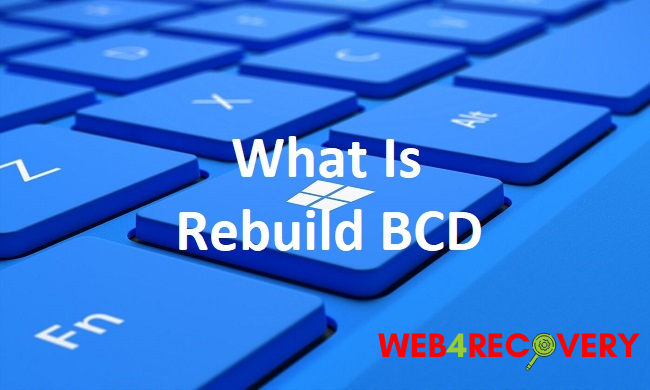When encountering boot-related issues in Windows 10, one useful solution is to rebuild the Boot Configuration Data (BCD) store.
The BCD store contains crucial boot configuration information, and errors or corruption within it can prevent the operating system from starting properly.
In this detailed guide, we will delve into what rebuilding the BCD entails, how to use the bootrec rebuildbcd command in a UEFI environment, and address common error messages like “The requested device cannot be found” or “Element not found” when executing the command in Command Prompt.

Understanding Rebuild BCD in Windows 10
The Boot Configuration Data (BCD) store is a database that contains information about the boot process and startup settings for Windows.
When the BCD store becomes corrupt or encounters errors, it can lead to boot failures or startup problems.
Rebuilding the BCD involves recreating the store from scratch, resolving any corruption or misconfiguration issues that may exist.
Rebuilding BCD with Bootrec Rebuildbcd Command in UEFI Environment
To rebuild the BCD in a UEFI (Unified Extensible Firmware Interface) environment, follow these steps:
- Access Advanced Startup Options: Restart your Windows 10 system and, during the startup process, access the Advanced Startup Options. You can do this by repeatedly pressing a specific key (e.g., F8 or F12) or a key combination (e.g., Shift + Restart) depending on your system.
- Choose Troubleshoot: In the Advanced Startup Options menu, select “Troubleshoot.”
- Access Command Prompt: Within the Troubleshoot menu, select “Advanced options,” then “Command Prompt.” This will open the Command Prompt window.
- Execute Bootrec Rebuildbcd Command: In the Command Prompt, type the following command and press Enter:
bootrec /rebuildbcd - Choose Windows Installations: The command will scan for Windows installations on your system. When prompted with the message “Add installation to boot list?”, type
Yand press Enter. - Complete the Process: Once the process is complete, restart your computer and check if the boot issue has been resolved.
Addressing Common Error Messages
When executing the bootrec /rebuildbcd command, you may encounter error messages such as “The requested device cannot be found” or “Element not found.” Here are possible solutions for each:
- The requested device cannot be found: This error message usually occurs if the system partition is not set as active. To resolve this, open Command Prompt as an administrator and use the
diskpartcommand to set the system partition as active. Then, proceed with thebootrec /rebuildbcdcommand. - Element not found: This error can occur if there are inconsistencies in the BCD store or issues with system files. To fix this, run the
bootrec /scanoscommand first to scan for Windows installations. Then, proceed with thebootrec /rebuildbcdcommand.
Conclusion
Rebuilding the BCD in Windows 10 is a valuable troubleshooting step to resolve boot-related issues and ensure smooth system startup.
By using the bootrec /rebuildbcd command in a UEFI environment, you can recreate the BCD store and address any corruption or misconfiguration problems.
Remember to address specific error messages like “The requested device cannot be found” or “Element not found” with the suggested solutions.
With these steps, you can restore your system’s boot functionality and get back to using your Windows 10 device without disruptions.

















